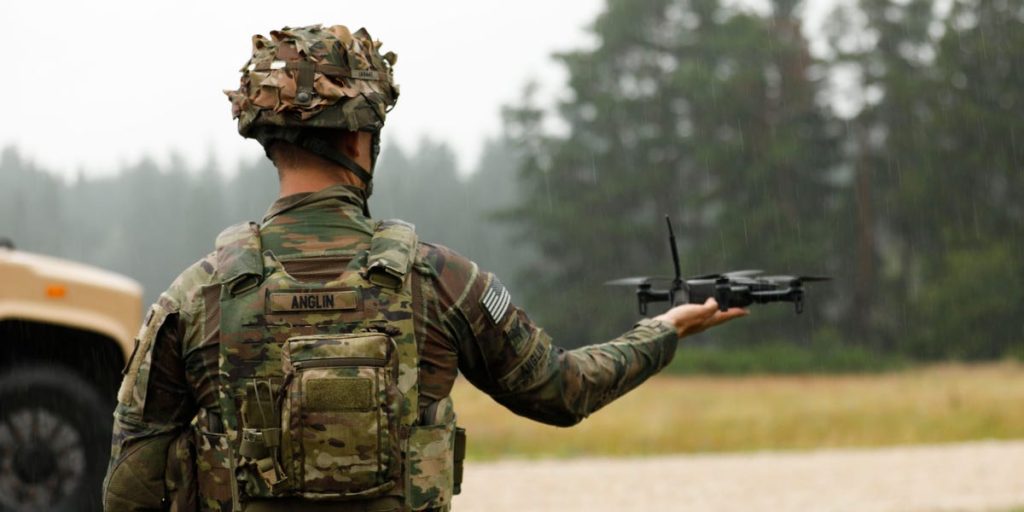Adaptation and Innovation: The U.S. Army in the Age of Drone Warfare
The evolution of warfare has reached a pivotal point with the increasing application of drone technology. The U.S. Army recently celebrated some noteworthy advancement in drone warfare capabilities, including its first instances of deploying grenades from quadcopter drones and achieving a drone-on-drone kill. These advancements, while significant, are not without their challenges, and they highlight both the progress and the gaps in the Army’s operational readiness in this domain.
Celebrating Recent Achievements
In July, the U.S. Army shared a video of American soldiers successfully dropping an M67 grenade from a quadcopter drone during military exercises in Germany. This marked a groundbreaking moment for conventional forces in the Army and was celebrated as a significant milestone. The excitement, however, was tempered by widespread criticism from observers who pointed out that such tactics have been widely utilized in prior conflict zones, including by groups like ISIS during the Battle of Mosul and Russian forces in their ongoing operations in Ukraine.
Moreover, the Army has recently recorded its first drone-on-drone kill. This event took place at Fort Rucker in Alabama, where soldiers piloted a first-person-view quadcopter armed with a Claymore mine. This tactical innovation reflects a rapid evolution of drone warfare techniques, a domain where many countries, particularly Ukraine, have been at the forefront.
Gaps in Military Preparedness
Despite these accomplishments, the Army’s recent advances underscore critical gaps in its drone warfare capabilities. Secretary of Defense Pete Hegseth expressed concerns in a July memo, stating that American units lack the necessary small drones required for contemporary combat scenarios. He noted that many troops are still without essential equipment, making them less prepared for the drone-enabled battlefield of the future.
The ongoing conflict in Ukraine serves as a stark reminder of how quickly drone technology can evolve and be integrated into combat tactics. The rapid adaptation of Russian and Ukrainian forces in employing first-person-view drones for strike missions has highlighted the U.S. Army’s need to accelerate its own integration of drone technology.
In-Field Challenges and Lessons Learned
Lessons from the battlefield underscore that challenges persist in the integration of drone systems into combat operations. Recent exercises revealed issues such as faulty video connections and equipment shortages that hindered effective operational capabilities. While both Ukrainian and Russian forces face similar hurdles, years of engagement in combat have allowed them to develop more robust systems for overcoming these obstacles.
Army officials acknowledge these difficulties. They emphasize the importance of documenting and sharing experiences and solutions across various units. The focus is now on integrating small drone technology, a process that is critical to maintaining operational advantages in future engagements.
Testing New Tactics in Diverse Environments
Army soldiers are actively engaged in evaluating drone performance under varying environmental conditions. Training exercises conducted in regions such as the Pacific aim to understand how drones function in different weather scenarios. This attention to detail reflects a responsive approach to developing drone capabilities, despite being perceived as lagging behind global rivals.
One Army program emphasizes an aggressive push to catch up with advancements seen in other militaries worldwide. Officials have noted that as they fine-tune tactics and technologies, they are also aware of the broader implications of failing to keep pace.
The Importance of Adaptation
Experts within the military have voiced concerns about the speed at which the U.S. Army is adapting to small drone technology compared to potential adversaries. Zachary Kallenborn, an expert in uncrewed capabilities, highlighted that the U.S. has not needed to commit to low-level experimentation with weaponry as urgently as countries engaged in ongoing, high-stakes conflicts like Ukraine. As a result, their rapid evolution in drone warfare tactics might serve as a critical learning opportunity for U.S. forces.
Furthermore, the lack of concentrated, immediate needs for rapid drone deployment has led to a slower pace of innovation. The U.S. military isn’t currently engaged in a conflict that requires an all-in investment in drone technology. This differs from nations like Ukraine, where the urgency to enhance operational capabilities has led to swift integration of drone systems.
Preparing for Future Conflicts
As concerns about potential conflicts with peer adversaries like China loom large, the U.S. Army recognizes the necessity of developing effective drone capabilities—both offensive and defensive. Recent analyses suggest that American forces could be overrun by drone swarms in a contention with a well-prepared adversary if they do not sufficiently prepare themselves in this emerging warfare landscape.
Current developments indicate that the Army is undergoing a period of adaptation as it seeks to integrate unmanned technologies into its operational framework. The ongoing training and exercises are crucial steps toward building a more robust defense and offense system powered by drone technology. In this pursuit, the Army is not just keeping pace but striving to harness the potential of drones to reshape modern warfare dynamics.

